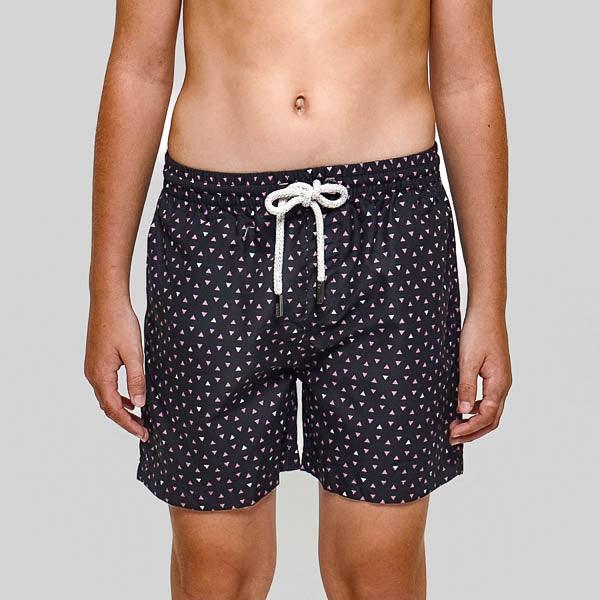Ensuring that boys' swimwear fits well and provides maximum comfort is essential for a positive swimming experience. Ill-fitting swimwear can lead to discomfort, irritation, and even hinder performance. This article offers expert tips on how to maximize boys swimwear fit and comfort, from choosing the right size and materials to considering specific design features.
Importance of Proper Fit
Why Fit Matters
A proper fit in swimwear is crucial for comfort, performance, and safety. Swimwear that is too tight can cause chafing and restrict movement, while swimwear that is too loose can lead to drag in the water and possible wardrobe malfunctions.
Signs of a Good Fit
- Snug but Not Tight: Swimwear should fit snugly against the body without pinching or constricting.
- Full Range of Motion: The swimwear should allow for a full range of movement without any restriction.
- Stay-in-Place Fit: The swimwear should stay in place during swimming and other activities, preventing the need for constant adjustments.
Choosing the Right Size
Measuring for Swimwear
- Waist Measurement: Use a flexible measuring tape to measure around the natural waistline.
- Hip Measurement: Measure around the fullest part of the hips.
- Inseam Measurement: Measure from the top of the inner thigh to the desired length for shorts or jammers.
Size Charts
- Consult Size Charts: Refer to the size charts provided by the swimwear manufacturer to find the best match based on measurements.
- Try Different Brands: Sizing can vary between brands, so it may be necessary to try different brands to find the best fit.
Material Matters
Choosing the Right Fabric
- Nylon: Lightweight and quick-drying, nylon is a popular choice for swimwear. It offers good elasticity and durability.
- Polyester: Known for its resistance to chlorine and UV rays, polyester is ideal for frequent swimmers.
- Spandex/Elastane: Blended with other fabrics, spandex provides stretch and flexibility, enhancing comfort and fit.
Considerations for Sensitive Skin
- Soft Fabrics: Choose swimwear made from soft, smooth materials that are gentle on sensitive skin.
- Hypoallergenic Options: Look for hypoallergenic swimwear options if the child has sensitive skin or allergies.
Design Features for Comfort
Seams and Stitching
- Flatlock Seams: Flatlock seams are designed to lie flat against the skin, reducing irritation and chafing.
- Seamless Designs: Seamless swimwear offers a smooth, comfortable fit without any bulky seams.
Waistbands
- Elastic Waistbands: Elastic waistbands provide a comfortable, adjustable fit.
- Drawstring Waistbands: Drawstrings allow for a customizable fit, ensuring the swimwear stays securely in place.
Liners
- Mesh Liners: Mesh liners provide breathability and support, enhancing comfort.
- Smooth Liners: Smooth fabric liners offer additional protection and reduce the risk of chafing.
Styles and Fit
Different Styles of Boys Swimwear
- Briefs: Offers minimal coverage and allows for a full range of motion, ideal for competitive swimming.
- Jammers: Provides more coverage and support, reducing drag and enhancing performance.
- Swim Shorts: Versatile and comfortable, swim shorts are suitable for casual swimming and beach activities.
Considering Activity Level
- Competitive Swimming: For competitive swimming, choose styles that minimize drag and provide maximum support, such as briefs or jammers.
- Recreational Swimming: For recreational swimming, opt for comfortable styles like swim shorts that allow for easy movement.
Tips for Maximizing Comfort
Pre-Swim Preparations
- Proper Fitting: Ensure the swimwear fits properly before heading to the pool or beach.
- Anti-Chafing Products: Apply anti-chafing balms or barrier creams to areas prone to irritation.
During Swimming
- Adjust as Needed: Make small adjustments to the swimwear if it starts to feel uncomfortable.
- Stay Hydrated: Drink plenty of water to keep the skin hydrated and reduce the risk of chafing.
Post-Swim Care
- Rinse Immediately: Rinse the swimwear with fresh water immediately after swimming to remove chlorine, salt, and other irritants.
- Proper Drying: Lay the swimwear flat to dry, avoiding direct sunlight which can damage the fabric.
Conclusion
Maximizing the fit and comfort of boys swimwear involves choosing the right size, selecting suitable materials, and considering specific design features. By following these expert tips, you can ensure that boys have a comfortable and enjoyable swimming experience, free from irritation and discomfort. Check out our other guides to boys swim trunk comfort.
FAQs
1. How can I tell if my child's swimwear is too tight?
If the swimwear leaves red marks on the skin, restricts movement, or causes discomfort, it may be too tight. Opt for a size that fits snugly without pinching.
2. What fabrics are best for boys with sensitive skin?
Soft, smooth fabrics like nylon and hypoallergenic options are best for boys with sensitive skin. Look for swimwear made from gentle materials to avoid irritation.
3. How often should swimwear be replaced?
Swimwear should be replaced once it shows signs of wear and tear, such as thinning fabric, loss of elasticity, or damage to seams. Frequent swimmers may need to replace their swimwear more often.
4. Are drawstring waistbands better than elastic waistbands?
Drawstring waistbands offer a customizable fit and can be adjusted for comfort, making them a good choice for active swimmers. Elastic waistbands provide a comfortable, flexible fit but may not offer the same level of adjustability.
5. What should I do if my child experiences chafing from swimwear?
If chafing occurs, clean the affected area with mild soap and water, apply a soothing ointment, and ensure the swimwear fits properly. Using anti-chafing products and choosing swimwear with smooth liners can help prevent future irritation.



















